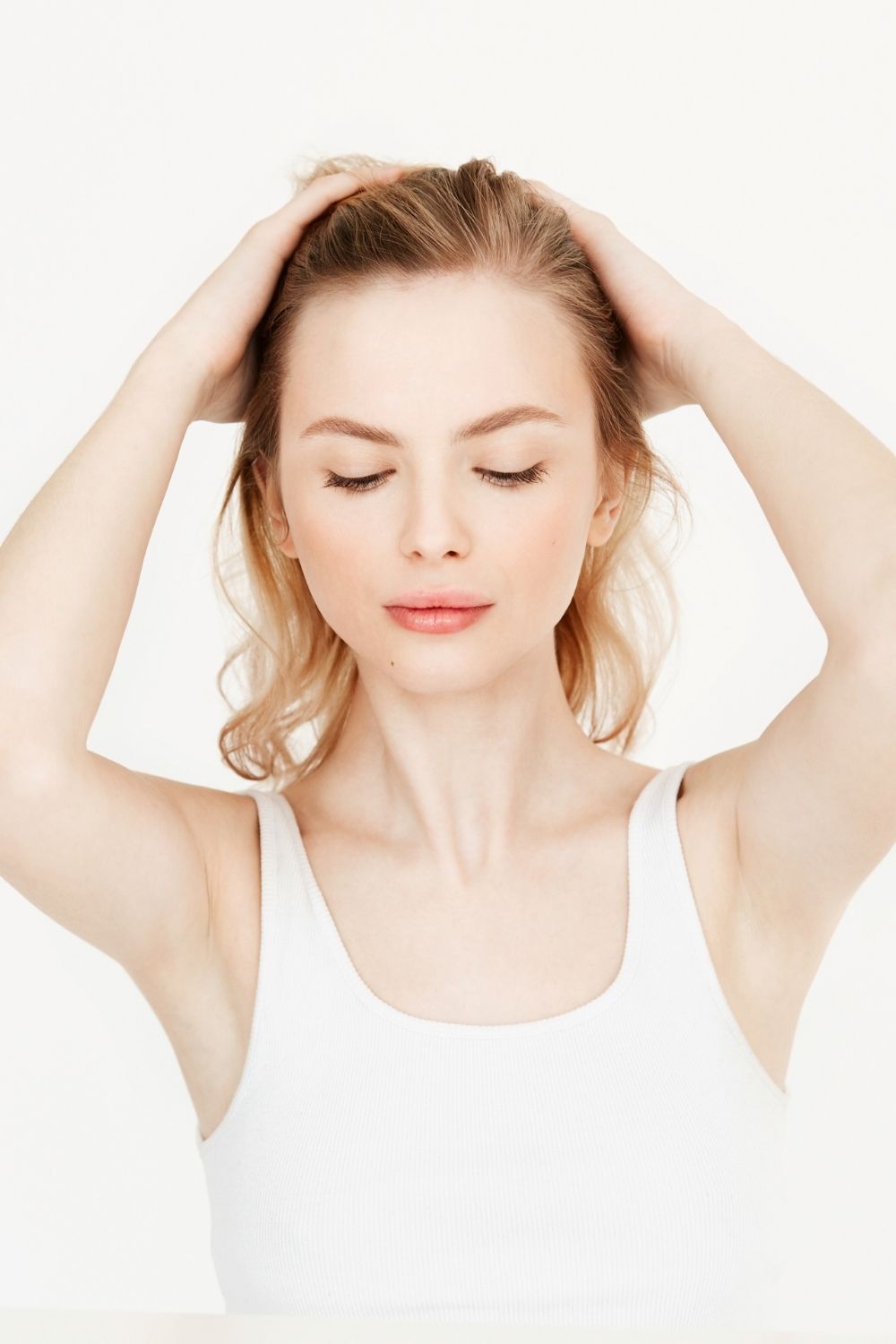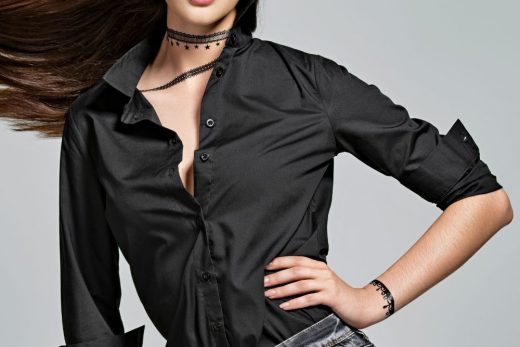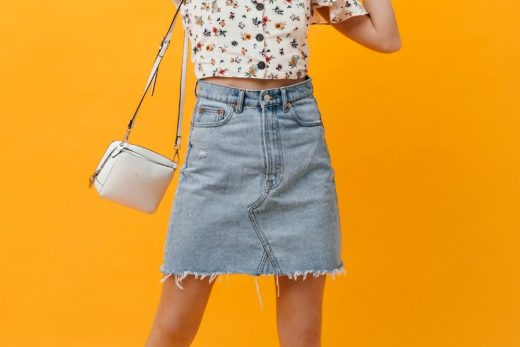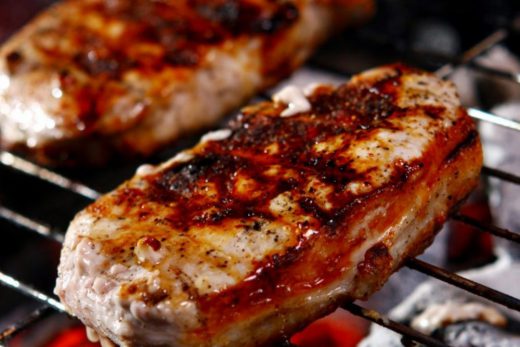It may be a little distressing to notice, possibly for the first time, that you have thinning hair. For many of us, it’s a natural part of aging that doesn’t necessarily need to be treated. But aging is only one of many factors that can cause or exacerbate thinning hair—and some of these causes should be addressed.
Once you know what’s causing the issue, it becomes a lot easier to figure out how to manage it. Below, SELF talked to several experts about ways to make your hair feel thicker and look shinier, as well as ways to prevent more hair thinning.
What’s actually causing your thinning hair?
The first thing to know about hair loss is that it’s actually a bit complex. Your hair grows in three stages, SELF explained previously. These include a growth phase from a root in the hair follicle, a transitional phase when the growing stops, and a resting phase, after which the hair falls out and the follicle takes a break before growing another hair.
It’s totally normal to lose between 50 and 100 hairs a day, according to the American Academy of Dermatology (AAD), which you might notice on your pillow in the morning, on your hairbrush, or in the shower. If you go a few days without showering, you might notice more than a single day’s worth of hair in the shower, which may be a little disconcerting, but is still totally normal.
You’re born with about 100,000 follicles on your scalp, and you’ll never gain or lose any, the AAD says. However, as you age, some follicles may stop growing hair and you may experience hair loss (also called anagen effluvium). When and how this happens is influenced by a bunch of factors, including our genetics and the natural hormonal changes we experience as we age, Shilpi Khetarpal, M.D., dermatologist at Cleveland Clinic, tells SELF.
But you might also experience hair shedding at certain points in your life, a process that’s separate from hair loss. Hair shedding (also called telogen effluvium) is more often caused by temporary changes in hormones, like giving birth, stopping hormonal birth control, or experiencing life stressors, like undergoing chemotherapy or recovering from a serious illness. Nutritional deficiencies, harsh hair products, and certain hair styles can also cause hair shedding, the AAD says.
If your hair is shedding, that means it’s falling out more quickly than it should be because it’s being shoved into the resting phase too early, SELF explained previously. But if you’re experiencing hair loss, that means there’s something stopping the hair from growing in the first place. And, because hair loss can be caused by different factors, it’s important to figure out which one you’re dealing with before trying to treat it.
If you don’t know if your thinning hair is due to hair shedding or hair loss, you should check in with an expert. It’s also important to talk to a dermatologist if you’re losing more than 100–150 hairs per day or you notice other issues (bald spots, hair shafts that break easily, or an itchy or burning scalp), Alina G. Bridges, D.O., dermatologist and dermatopathologist at the Mayo Clinic, tells SELF. These could signal a more serious hair-loss issue or an underlying condition (like scalp psoriasis) that warrants professional treatment.
If you’re not sure how many hairs you’re losing in a single day (understandable) you can test it with the 60-second hair count: Comb your hair forward from the back of your head to the front for a full minute. Collect and count the hairs that were shed through this process—you should see between 10 and 20 strands, depending on your age. If you see more than that, you might be dealing with some excess hair loss. To get the most accurate idea of how many hairs you’re losing, you might want to do this a few days in a row.
Once you know what you’re up against, there are some easy ways to help manage thinning hair at home or with the help of an expert. Here are the top tips we learned from dermatologists and hair stylists on how to protect your hair and restore some of its fullness and shine.
How to protect, manage, and treat thinning hair:
Wash and condition regularly, but not too frequently.
You likely don’t need to wash your hair every day. In fact, Samantha DelaFuente, a stylist at Marie Robinson Salons in New York and Miami, tells SELF that she recommends washing only two or three times a week. “Don’t be afraid of dirty hair,” she says.
And dermatologists agree: “Washing too often strips your hair of necessary oils, and washing infrequently can leave hair dull and limp, especially if you overuse dry shampoo,” Dr. Bridges says. If you have natural hair, which tends to be drier and more prone to breakage, clean it even less frequently, Dr. Khetarpal says.
Moisturizing shampoos formulated without sulfates—chemicals in shampoos that help clean but can also be drying on sensitive or dry scalps—are a safe bet for everyone. In particular, celebrity stylist Tym Wallace tells SELF he recommends Oribe Gold Lust Repair & Restore Shampoo.s
Always follow shampoo with conditioner.
Conditioner gives your hair shine and reduces static electricity, the AAD explains, which is why it improves the look and feel of dull or damaged hair. Apply to the ends of the hair and work your way up, DelaFuente says. “A little goes a long way; the more conditioner you use, the flatter your hair will be.”
Remove tangles with a wide-tooth comb and rinse with cool water, which closes the cuticle and makes the hair shiny, Dr. Bridges explains.
If you’re looking for conditioners that can specifically help dull or thinning hair, Eric Leonardos, stylist at Ted Gibson, tells SELF he recommends Klorane Gel Conditioner with Peony ($20, Ulta), which contains soothing and hydrating ingredients, or Shu Uemura Muroto Volume Conditioner ($58, Shu Uemura), which has a lightweight formula that won’t weigh down hair.
Finish with a leave-in conditioner or detangler.
After shampooing and conditioning, try using a leave-in product, like a conditioner or detangler, which will boost moisture and provide heat protection before styling.
Wallace recommends the moisturizing and protecting It’s a Ten Miracle Leave-In Conditioner Spray Product ($38, Ulta) as well as the truly multitasking Form Multitask 3-in-1 Leave-in Lotion ($32, Form Beauty).
Use a conditioning mask to boost your hair’s shine.
Once a week, apply a deep conditioning mask for extra moisturizing powers, and leave on for 15–20 minutes, Dr. Bridges says. Finish by rinsing with cool water.





